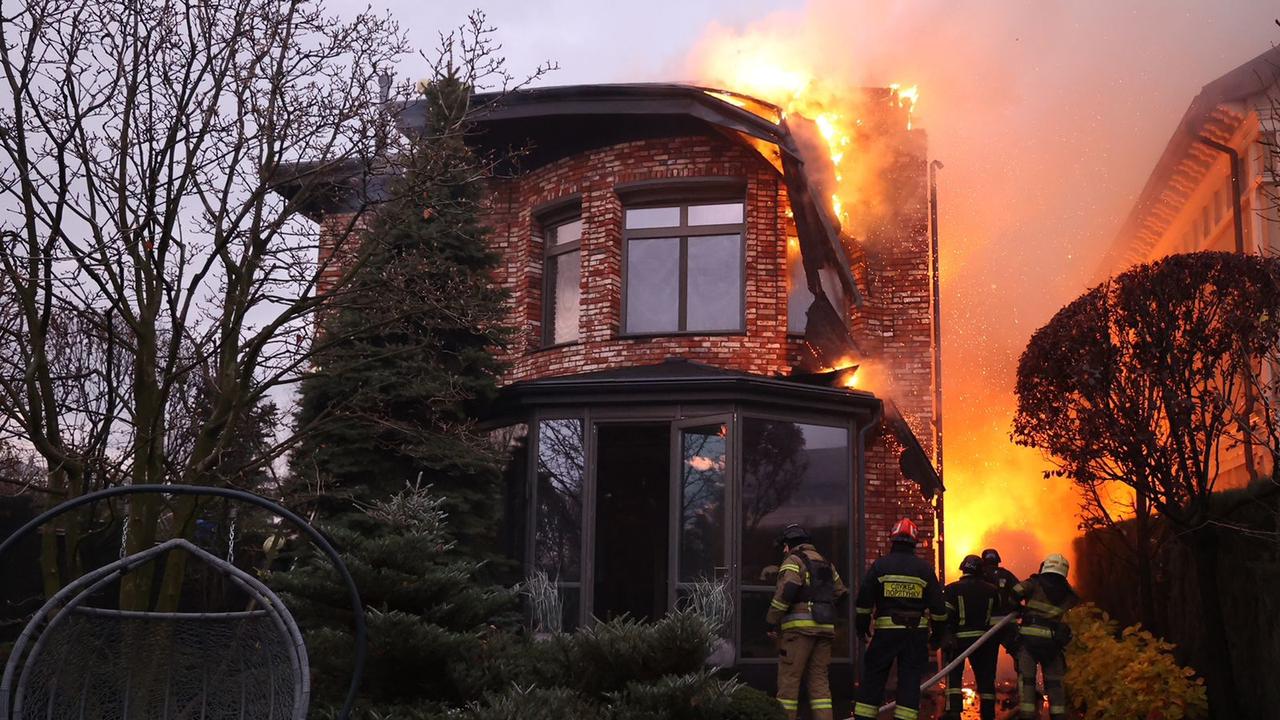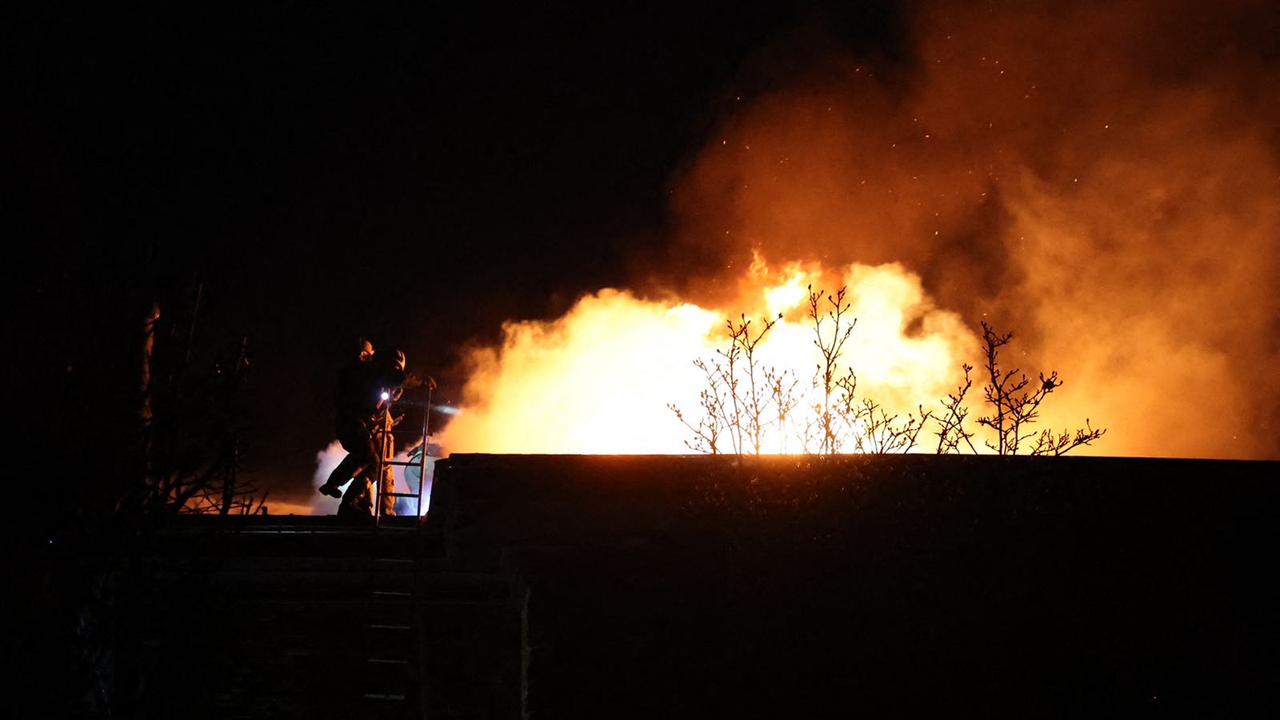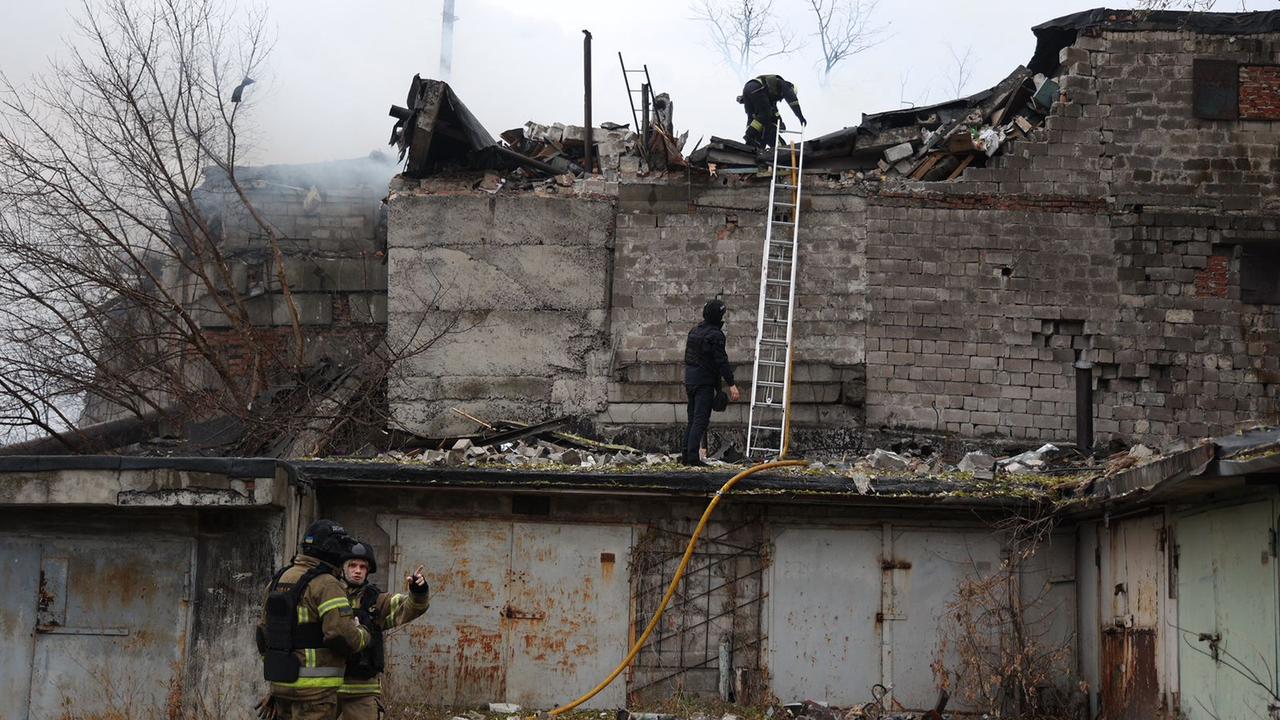
This article is more than
1 year oldRussia has reacted angrily to a new American missile base in Poland and issued a not-so-subtle threat.
Russia has threatened to fire “advanced weapons” at NATO country Poland, once again stepping up tensions and fuelling fears of World War III.
Moscow said that a new US ballistic missile defence base in northern Poland will lead to an increased nuclear danger.
However Warsaw has responded by saying that “threats” from Moscow only strengthened the argument for NATO defences.
The air defence base, situated in the town of Redzikowo near the Baltic coast, part of a broader NATO missile shield, was opened on November 13.

“This is another frankly provocative step in a series of deeply destabilising actions by the Americans and their allies in the North Atlantic Alliance in the strategic sphere,” Russian Foreign Ministry spokesperson Maria Zakharova said.
“This leads to undermining strategic stability, increasing strategic risks and, as a result, to an increase in the overall level of nuclear danger.
“Given the nature and level of threats posed by such Western military facilities, the missile defense base in Poland has long been added to the list of priority targets for potential destruction, which, if necessary, can be executed with a wide range of advanced weapons.”
Pawel Wronski, Poland’s foreign ministry spokesperson, said there were no nuclear missiles at the base, which was purely for defence.
“It is a base that serves the purpose of defence, not attack,” Wronski said. “Such threats will certainly serve as an argument to strengthen Poland’s and NATO’s air defences, and should also be considered by the United States.”The US base at Redzikowo is part of a broader NATO missile shield, dubbed “Aegis Ashore”, which the alliance says can intercept short- to intermediate-range ballistic missiles.
The NATO missile shield includes sites in Poland, Romania as well as U.S. Navy destroyers at a naval base in Spain and an early warning radar in Turkey, according to NATO.
Kyiv accuses Russia of launching intercontinental ballistic missiles
Kyiv claims Russia launched an intercontinental ballistic missile attack at Ukraine on Thursday.
If true it would be the first time such a weapon has been used in almost three years of fighting.
Intercontinental ballistic missiles can carry nuclear warheads and can strike anywhere in the world.
Firing such a weapon would be a clear message to the West of what Russia’s capabilities are.
Ukraine said the missile had targeted the central city of Dnipro, while the Kremlin said it was doing everything possible to avoid a nuclear conflict but did not confirm it had deployed the weapon.

The Russian missile barrage on the industrial city that left two people wounded is the latest escalation since Ukraine fired Western-supplied long-range missiles on Russia.
The Ukrainian air force said in a statement that Russia in the early hours of the morning had launched several types of missiles at Dnipro, targeting critical infrastructure.
“In particular, an intercontinental ballistic missile was launched from the Astrakhan region of the Russian Federation,” the statement said.
Biden’s $7.2 billion move
Meanwhile Joe Biden’s administration has announced plans to cancel $4.65 billion (A$7.2 billion) of Ukraine’s debt as part of a broader effort to strengthen support for Kyiv before President-elect Donald Trump takes office.
The move includes forgiving half of a $9 billion loan provided to Ukraine as part of a $60 billion package approved earlier this year.
The loan, originally suggested by Mr Trump during his campaign, was always expected to have a portion forgiven.

The State Department stated that cancelling the debt is in the national interest of the US and its international allies, but questions continue to swirl over the state of the US economy.
The decision is part of Mr Biden’s push to send more aid to Ukraine before Mr Trump, who has expressed interest in pursuing peace talks with Russia, assumes power.
Mr Biden recently authorised Ukraine to use US long-range missiles and announced a new security assistance package, which includes antipersonnel landmines.
The State Department confirmed that these actions align with the authority granted by the US Congress.
Russian tactic spurred landmine decision
The US decision to send antipersonnel landmines to Ukraine — a major policy shift slammed by rights groups — was triggered by a change in Russian battlefield tactics favouring infantry over mechanised units, US Defense Secretary Lloyd Austin said Wednesday.


“They don’t lead with their mechanised forces anymore,” Austin told reporters while on a visit to Laos. “They lead with dismounted forces who are able to close and do things to kind of pave the way for mechanised forces.” The Ukrainians “have a need for things that can help slow down that effort on the part of the Russians.” President Joe Biden’s reversal of his previous curbs on US landmines comes just days after Washington gave Ukraine the green light to use US-made long-range missiles on targets within Russia, a longstanding ask from Kyiv.
The outgoing US administration is aiming to give Ukraine an upper hand before President-elect Donald Trump enters office.
Trump has repeatedly criticised US assistance for Ukraine, claiming he could secure a ceasefire within hours, without explaining details.
His comments have triggered fears in Kyiv and Europe about Ukraine’s ability to withstand Russian attacks without US support.

In 2022, Biden said the United States would mostly ban its use of landmines, at the time specifically drawing a contrast with Russia’s use of the weapons in Ukraine.
Both Russia and the United States — neither of which are signatories to the UN Mine Ban Treaty — have been criticised for their past use of antipersonnel mines.
Ukraine is a signatory of the treaty. A report from the International Campaign to Ban Landmines on Wednesday said Kyiv was investigating the reported use of antipersonnel mines by its soldiers in 2022, in violation of the treaty.
‘Threat to civilians’
The United States said Ukraine would be supplied with so-called “non-persistent” mines that can self-destruct or render themselves inactive after losing battery charge — in theory limiting the risk to civilians.
“Within two weeks, if they have not been detonated, they become inert,” State Department spokesman Matthew Miller told reporters.
He said that Ukraine would need to conduct missions to get rid of unexploded ordnance at the end of the conflict regardless of the new weapons authorisation.
The decision was immediately slammed by rights groups.
Mary Wareham, a deputy director at Human Rights Watch, said Ukraine’s use of the mines would contravene the Mine Ban Treaty, and questioned the safety of the ageing stocks Washington would be supplying.
“From a clearance perspective, de-miners have to approach any type of explosive object with the knowledge that it may explode,” Wareham told AFP, adding that the self-deactivation feature is “not enough.”
Amnesty International called Washington’s decision “a deeply disappointing setback,” saying “even the ‘non-persistent’ mines are a threat to civilians.”
The Biden administration was similarly criticised last year for supplying Ukraine with cluster munitions.
The landmines will be provided as part of a larger tranche of aid being supplied to Ukraine valued at $275 million, which also includes HIMARS rocket ammunition, TOW missiles and small arms.
- with AFP